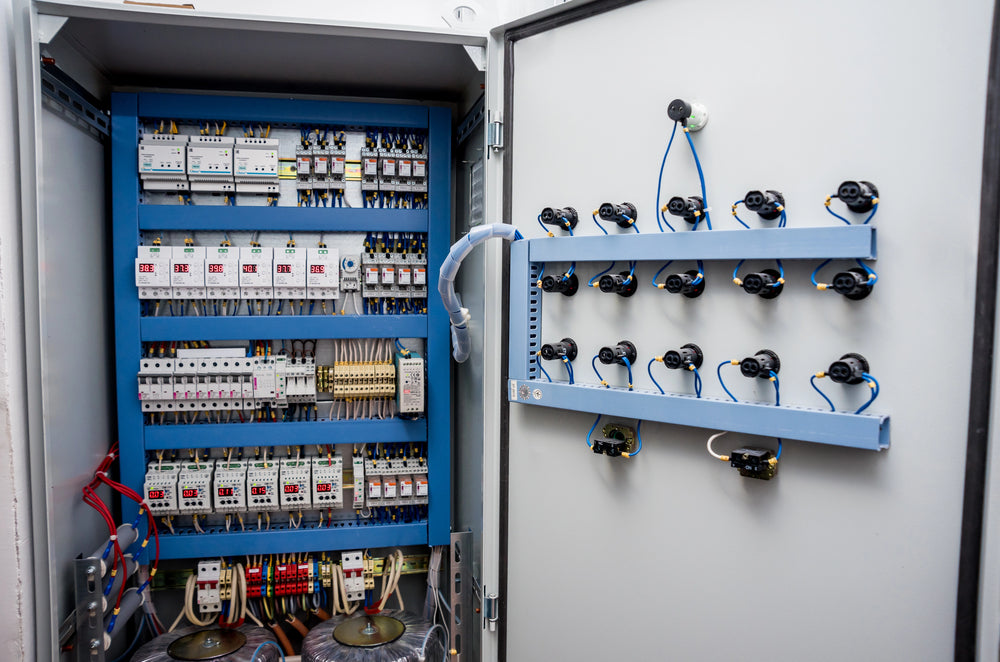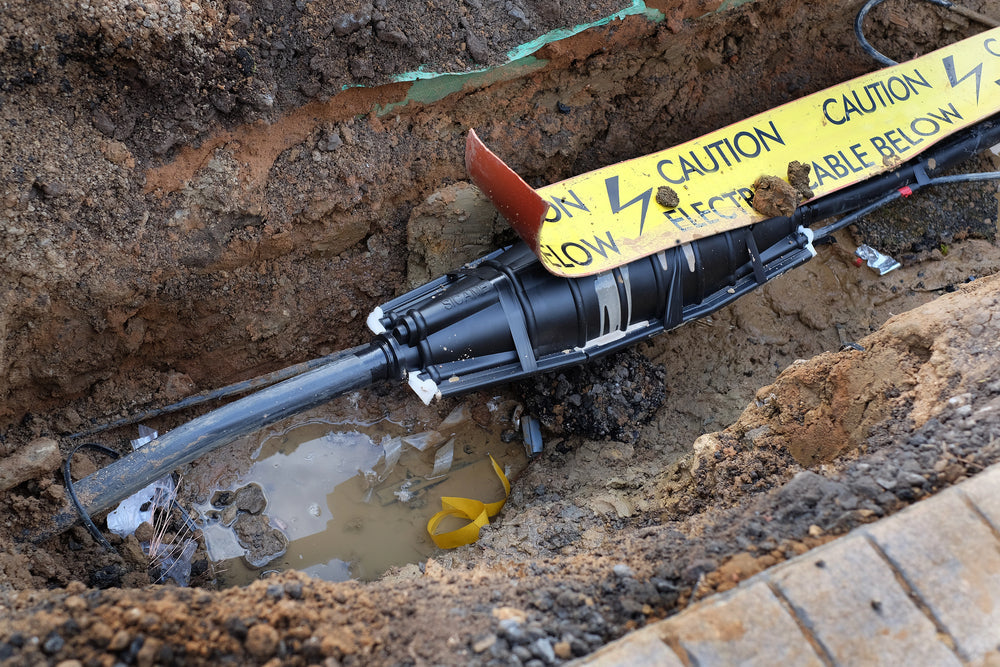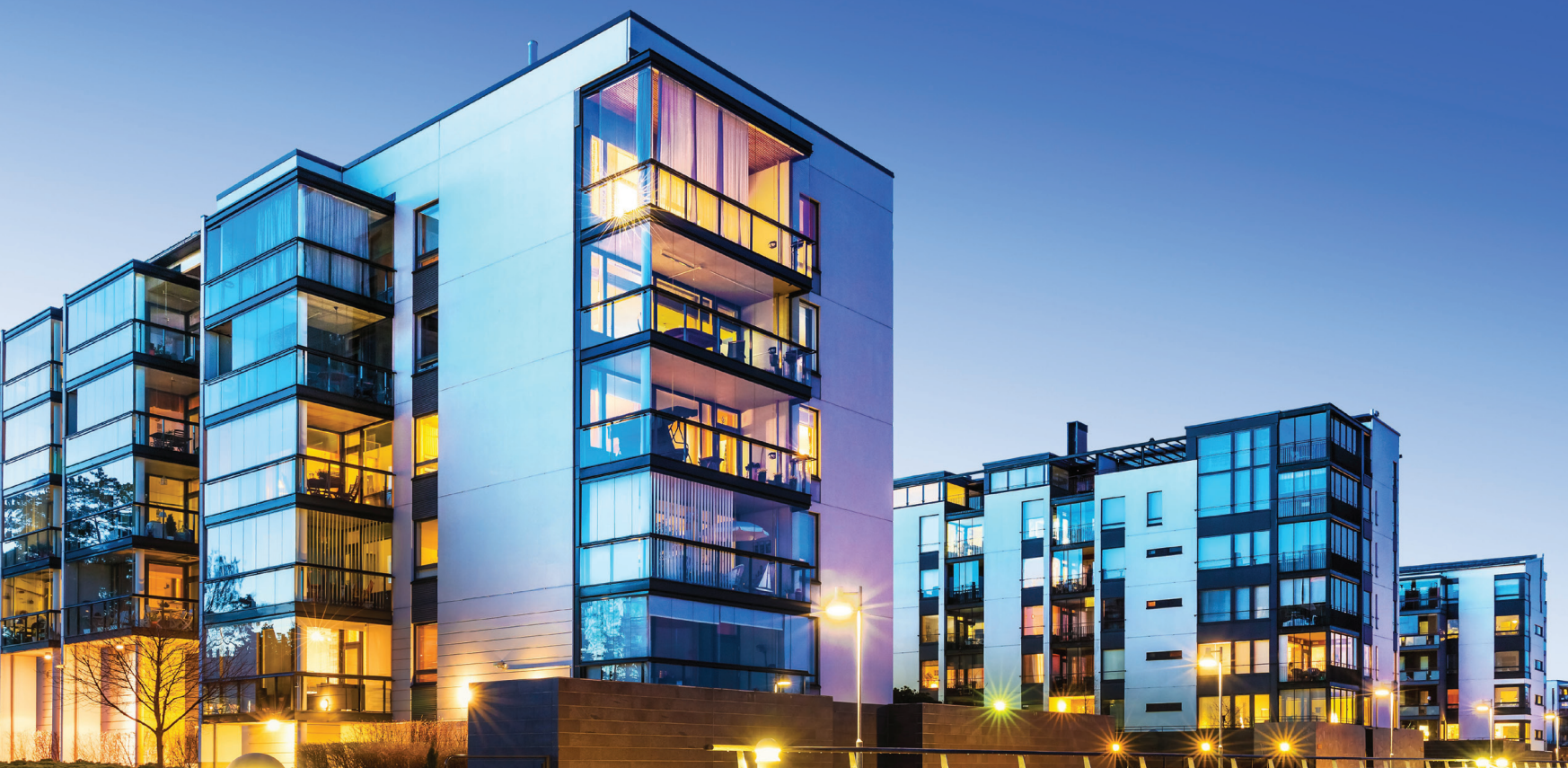The terms load center and panelboard often get thrown around like they mean the same thing. They both serve an important purpose in electrical systems, but they are not interchangeable.
Whether you are a contractor working on a large commercial project or a homeowner replacing an old electrical panel, understanding the difference between the two can help you choose the right setup. This article breaks down the main differences between a load center vs. panelboard.
Where the Load Center Fits Best
A load center usually works in houses or small businesses. It is built to handle lower power loads, and that makes it perfect for everyday electrical needs. Most of the time, you will find it mounted in a garage or basement, holding all the breakers that control different parts of the home. It comes with a main breaker that can shut off power to the whole panel. That feature is a big deal in emergencies or when repairs are needed.
Inside, the breakers are lined up in a simple layout, and each one connects to lights, appliances, or other devices in the building. Most people think of the load center as the main power hub for the house. It gets power from outside, then breaks that up into different circuits that run to rooms or equipment.
You can usually spot a load center by its compact size. It does not take up a lot of wall space and does not need a high-capacity power source. That makes it an easy fit for homes and places that do not use a heavy amount of electricity. It is also easier to install and change out when needed. Electricians often choose this option for quick upgrades in older buildings.
What Makes a Panelboard Stand Out
A panelboard is meant for bigger spaces and higher power demands. You see these more in large commercial spaces, manufacturing plants, or any place where equipment uses a lot of electricity. It is built to handle more amperage and often comes with a wider range of circuit space. It also distributes electricity across several different areas or sections of a building.
One thing that stands out about panelboards is how flexible they are in setup. These units come with lots of configuration options. You can place breakers in different formats, add accessories, or split up power across larger areas. That level of control makes them perfect for places with more wiring complexity and larger machines.
Panelboards also come in bigger enclosures and are mounted with a little more planning. You may find them inside electrical rooms or control areas instead of on open walls. They often connect to more than one power source or backup system, depending on their use. They are not meant to be plug-and-play like load centers. They take time and planning to install, which is why most businesses work with pros to get them in place.
Where the Two Begin to Overlap
There are times when people look at the panelboard and load center and get confused. On the outside, some units may look similar. They both hold breakers and both manage how electricity flows through a building. But it really comes down to how much power each one can handle and what kind of job they are designed to do.
A load center will not support large motors or entire floors of a building with multiple machines. A panelboard would be too large for a small house and might cost more than what is needed. They each serve a clear purpose, and using one in place of the other can lead to safety problems or extra repairs later.
Knowing What Fits Your Job
Think about how much electricity your building uses. A house with a few bedrooms and normal appliances does not need a heavy-duty panel. A large factory or commercial office with rows of lights, computers, or machinery needs something stronger.
When comparing load centers vs. panelboards, you should also consider how often you will make changes to the system. Homes usually stay consistent with power use. Commercial buildings might need upgrades, circuit additions, or reconfigurations as equipment changes. Panelboards are better suited to handle those kinds of adjustments.
Installation Time and Labor
One important part of the decision that often gets overlooked is how long the installation will take. A load center usually takes less time to install because of its smaller size and simpler wiring layout. Electricians can get them up and running quickly, especially in homes where the wiring plan is already basic. There are fewer circuits, fewer changes to make, and less time spent planning around other systems. That makes it a solid choice for quick turnarounds or weekend upgrade jobs.
Panelboards take longer as these units usually require more planning, more space, and more wiring work. If you are setting one up in a large facility, there is a good chance you will need permits, inspections, and maybe even downtime while the work happens.
This does not mean panelboards are harder to work with, they just take more effort and time to install the right way. That is something you need to plan for when building a timeline or hiring a crew.
Safety and Long-Term Maintenance
Once your system is installed, safety and upkeep become part of the job. Load centers are usually easier to inspect and maintain. Because the layout is simpler, it is faster to identify a problem and reset or replace a breaker. Homeowners can even do basic checks themselves, like opening the door and looking for signs of heat or damage.
Panelboards need more attention. These systems handle more power, which means wear and tear can show up faster in busy setups. That is why commercial buildings usually schedule regular checks.
Electricians look for signs of overload, wear on connectors, and signs that a breaker might be close to failure. The larger number of circuits means problems can be hidden if no one is watching. But with regular maintenance, these systems can stay safe and strong for years without any major issues.
Get the Right Electrical Products
Our team at Sonic Electric is here to talk through your project and help you figure out what makes sense. We ask questions, look at your power needs, and help match the right product to the job. We do not overcomplicate it. You explain your setup, and we help you make a choice that works now and in the long run.
Whether you are replacing an outdated panel or setting up a new electrical system from scratch, we can help you get it right. We stock different electrical parts and equipment you need, and we work with contractors, electricians, and homeowners to make sure everything fits the project.
If you are still deciding between a load center or a panelboard, we can help. Contact us today and our team will guide you in the right direction.





Share:
How To Install An Underground Electrical Junction Box